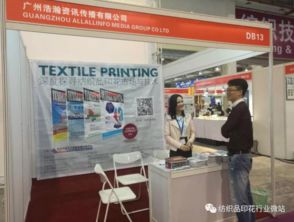National Standards for Textile Durability
"The National Standards for Textile Durability" is a comprehensive guide that outlines the standards and requirements for textile materials, particularly those used in construction and industrial applications. The document covers various aspects of textile durability, including strength, resistance to wear and tear, chemical resistance, and fire resistance. It provides detailed specifications for different types of textiles, such as woven fabrics, non-woven fabrics, and knitted fabrics, as well as their application in specific industries like construction, automotive, and apparel.,The standards also address the testing methods and procedures for evaluating the durability of textiles, including tensile testing, abrasion testing, and flame retardancy tests. They provide guidelines for selecting appropriate textiles based on their performance in harsh environments and long-term usage. Additionally, the document highlights the importance of proper handling and storage of textiles to maintain their durability and quality.,Overall, "The National Standards for Textile Durability" serves as a valuable resource for industry professionals and researchers who need to ensure that textile materials meet the highest standards of durability and reliability.
Introduction: Textiles are an essential part of our daily lives, from clothing to furnishings. They are designed to withstand wear and tear, but the durability of these fabrics is often measured by a variety of standards set by national regulatory bodies. In this article, we will explore the various methods used to determine textile durability and how they compare to each other. We will also provide an example of how these standards can be applied in practice through a case study.
Methodology: There are several methods used to measure textile durability, including:
- Tensile strength: This method measures the maximum force that can be applied to a textile sample before it breaks. The higher the tensile strength, the more durable the fabric.
- Tear strength: This method measures the maximum force required to tear a textile sample. The higher the tear strength, the stronger the fabric.
- Abrasion resistance: This method measures the amount of material worn away by rubbing against another surface, such as abrasive paper or sandpaper. The higher the abrasion resistance, the more durable the fabric.
- Water absorption: This method measures the amount of water that can be absorbed by a textile sample. The lower the water absorption, the more durable the fabric.
- Dyestuff resistance: This method measures the ability of a textile sample to resist color fading when exposed to dyestuffs, such as sunlight or chemicals.
Comparison: When comparing these methods, it's important to consider the specific application and requirements of the textile being tested. For example, if a garment needs to withstand heavy use and abuse, tensile strength and tear strength may be more important than abrasion resistance. On the other hand, if a fabric is intended for outdoor use, water absorption and dyestuff resistance may be more critical.
Case Study: Let's take a look at a real-world example of how these standards can be applied in practice. Imagine a company that manufactures outdoor clothing for hikers and campers. They need to ensure that their fabrics are durable enough to withstand harsh conditions, such as exposure to rain, wind, and sun.

The company could use a combination of different methods to test their fabrics, depending on the specific requirements of their products. For example, they might conduct tensile strength tests to determine the maximum force that can be applied to the fabric without breaking it. They might also conduct tear strength tests to ensure that the fabric can withstand repeated pulling and tearing.
In addition, they might also perform abrasion resistance tests to measure how much material is lost when rubbing against rough surfaces. Finally, they might conduct water absorption tests to determine how well the fabric can absorb moisture.
By using a combination of these methods, the company can gain a comprehensive understanding of the durability of their fabrics and make informed decisions about which materials to use and how to process them. By following national standards for textile durability, they can ensure that their products meet the highest quality standards and provide customers with reliable and long-lasting products.
国标纺织品耐磨性概述
国标纺织品是指符合特定标准,用于各种日常穿着和特殊用途的纺织品,耐磨性是衡量纺织品耐久性和使用寿命的重要指标,为了确保纺织品在各种使用场景下的耐用性和舒适性,国标纺织品对耐磨性有着严格的要求。

国标纺织品耐磨性的重要性
- 提高使用价值:耐磨性好的纺织品能够延长使用寿命,减少更换频率,从而提高使用价值。
- 满足消费者需求:消费者对于纺织品耐磨性的要求越来越高,国标纺织品必须符合这一要求。
国标纺织品耐磨性的测试方法
- 试验方法:国标纺织品耐磨性测试主要采用摩擦试验、磨损试验等方法。
- 测试标准:根据不同纺织品类型和用途,国标规定了不同的耐磨性标准,对于棉织品,耐磨性标准通常在一定的摩擦次数后观察其磨损程度。
案例分析:国标纺织品耐磨性的实际应用
某品牌运动服
某品牌运动服采用高品质的涤纶纤维材料,经过严格的生产工艺和检测流程,其耐磨性得到了显著提升,该运动服在各种运动场景下表现出色,深受消费者喜爱。
家居用品

家居用品领域也注重耐磨性的提升,某些家居地毯采用耐磨性较高的合成纤维材料,经过特殊处理后,其耐磨性能得到了广泛认可,一些防水窗帘和防滑垫等家居用品也注重耐磨性的提升,以满足消费者对耐久性和舒适性的需求。
提高国标纺织品耐磨性的措施
- 选择优质材料:选择耐磨性好的材料是提高纺织品耐磨性的关键。
- 控制生产工艺:优化生产工艺流程,提高生产效率和质量,从而降低生产成本和提高产品质量。
- 加强检测力度:加强纺织品检测力度,确保产品符合国标要求。
- 宣传推广:通过宣传推广,提高消费者对国标纺织品耐磨性的认识和重视程度。
国标纺织品耐磨性是衡量纺织品质量的重要指标之一,为了满足消费者对耐久性和舒适性的需求,生产企业必须重视国标纺织品耐磨性的提升,通过选择优质材料、控制生产工艺、加强检测力度以及宣传推广等措施,可以有效地提高国标纺织品的耐磨性,从而提升其使用价值和市场竞争力。
Articles related to the knowledge points of this article:
The Story of Double Connect Textiles:A Multinational Textile Company
Understanding the Super Symbols of Textiles:A Comprehensive Guide
The Transformative Power of Bamboo in Textiles
The Role of Textile Printing Ponds in the Fabric Manufacturing Process


